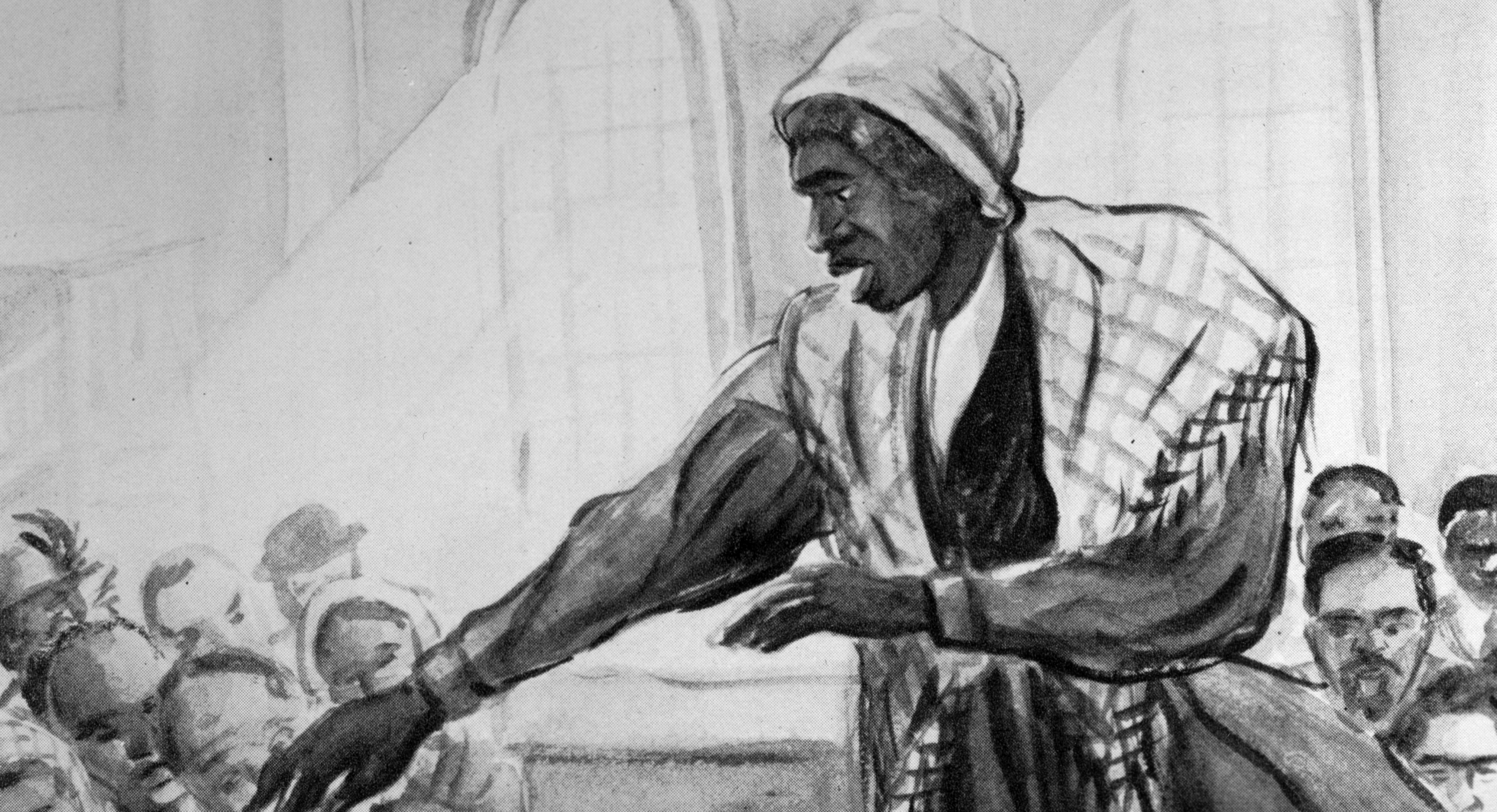Sojourner Truth

Illustrated portrait of Sojourner Truth delivering her famous speech, with her arm raised and fire in her eyes.
Biography
Born Isabella Baumfree in 1797 in Ulster County, New York, she spent her early life enslaved by Dutch-speaking families. Sold multiple times, beaten, separated from loved ones—she experienced the brutal machinery of American slavery firsthand. After escaping with her infant daughter in 1826, she sued a white man to get her son back—and won. That case made her the first Black woman in U.S. history to win such a legal battle.
In 1843, after a religious awakening, she renamed herself Sojourner Truth and began traveling the country preaching freedom, faith, and equality. Her speeches weren’t written—they were felt, lived, thundered. She mixed plainspoken wisdom with holy fire, calling out hypocrisy in the church, the courtroom, and the kitchen.
Her speech at the 1851 Women’s Rights Convention in Akron, Ohio has since become legendary—though widely misquoted. The version with the repeated phrase 'Ain’t I a Woman?' was published 12 years later by Frances Gage, a white reformer who exaggerated Truth’s dialect and altered key facts. Truth, a New Yorker, didn’t speak in Southern drawl. And she had five children—not thirteen.
The more historically accurate version, printed just weeks after the convention in the Anti-Slavery Bugle, reveals a speaker who demanded logic, fairness, and full human recognition. Whether she said the famous phrase or not, her meaning was unshakable: she was a woman, she had suffered, labored, and lost, and she deserved rights.
Truth remained a fierce advocate for the rest of her life—working with Frederick Douglass, meeting President Lincoln, campaigning for prison reform, land rights, and equal suffrage. She died in Battle Creek, Michigan in 1883, but her voice—unrecorded, misquoted, and unstoppable—still echoes in movements for justice today.
Sojourner Truth challenged both the racism of white feminists and the sexism of male abolitionists—at a time when few dared to do either. Her speech wasn’t just a moment; it was a manifesto. One that made space for future generations of activists who live at the intersection of multiple identities.
?
Why do you think Frances Gage altered Sojourner Truth’s speech?
How does Truth’s story reflect the importance of intersectionality?
In what ways did Truth challenge both sexism and racism in her time?
How do we ensure marginalized voices are accurately represented in history?
What lessons can activists today learn from Sojourner Truth’s approach to public speaking and advocacy?
Dig Deeper
A powerful short documentary on Sojourner Truth’s life, legacy, and her landmark speech—perfect for classrooms and history lovers alike.
TED-Ed animation exploring the story behind Sojourner Truth’s speeches, her impact on the abolition and women’s rights movements, and the complexities of her legacy.
Discover more

John Brown
John Brown was a radical abolitionist who believed that slavery would never end unless confronted with violence.

Nelson Mandela
Nelson Mandela was a South African freedom fighter who spent 27 years in prison for resisting apartheid and became the country’s first Black president.

Bayard Rustin
Bayard Rustin was the brilliant strategist behind the 1963 March on Washington and a key advisor to Martin Luther King Jr.
Further Reading
Stay curious!
